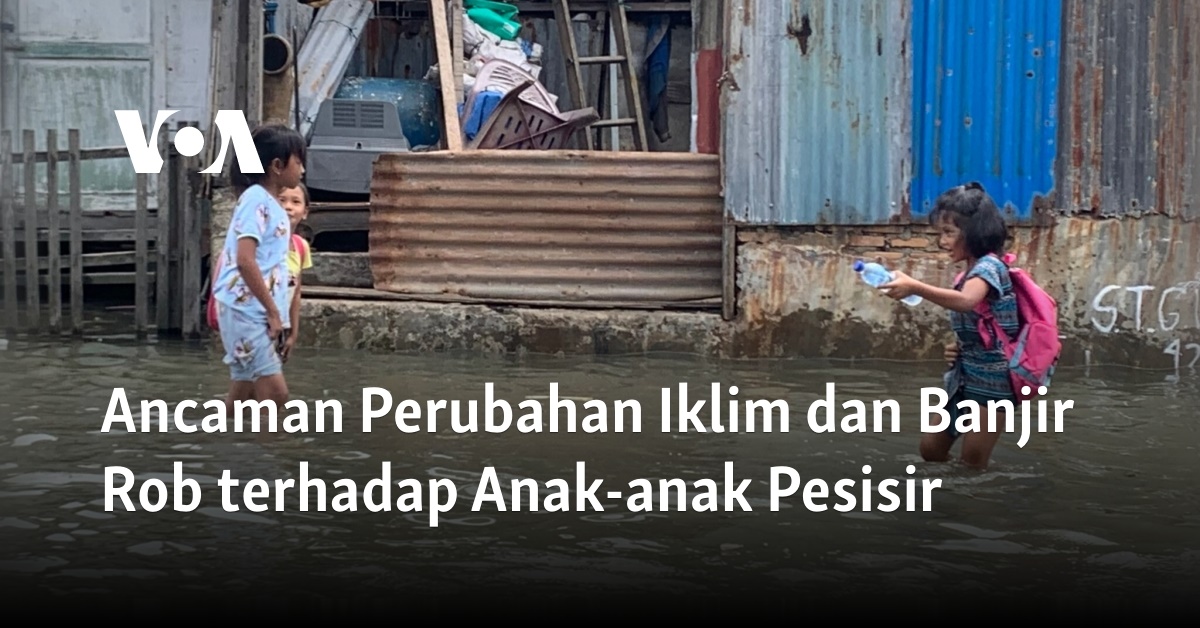
For children living in coastal areas, an increase in the frequency of flash floods or tidal floods due to climate change is often seen as a sudden free entertainment. However, behind that, health threats and potential disruptions to education loom for children affected by flash floods. So, how can we mitigate and fulfill children’s rights when flash floods occur?
Lisa, a junior high school student, was stuck in front of her house. She was supposed to go to school, but her face turned grim as she looked at the tidal flood slowly filling her house in Lorong Kenanga, Belawan I Village, Medan Belawan District, Medan City.
Medan Belawan area is often hit by flash floods. Many children Lisa’s age play in the flood, from taking a bath to swimming. They enjoy this regular disaster, as if it is a sudden free entertainment and an exciting treat for coastal children. However, there are serious threats to them.
According to the Indonesian Pediatric Association (IDAI), climate change has a real impact on children’s health, ranging from malnutrition, mental problems, violence, and even death.
Chair of the IDAI Disaster Mitigation Task Force, Kurniawan Taufiq Khadafi, said that climate change such as extreme heat can potentially cause sudden infant deaths and child disability. Likewise, extreme cold can also cause infant deaths due to hypothermia. “Climate change also has a significant impact on the increasing spread of infections transmitted through vectors such as dengue fever or malaria. Factors that contribute to the increase in vector-borne infections include temperature, humidity, and rainfall,” he added.
Furthermore, climate change that triggers an increase in the frequency of flash floods can make children susceptible to diseases transmitted through water media, such as diarrhea and skin diseases.
“Flash floods can also cause anxiety and trauma in children. A study conducted in a district in Pekalongan found that during flash floods, six percent of children suffered from depression and 93 percent of them experienced anxiety,” Kurniawan explained.
The simplest way to avoid diseases due to flash floods is to change children’s clothes when exposed to floods and always have a supply of clean water. “This way, children can avoid diarrhea and skin diseases,” said Kurniawan.
Lisa’s mother, Rapeah (40), said that flash floods also disturb her daughter’s activities in obtaining her right to education. Often, her daughter refuses to go to school when the flash floods inundate their area. “Sometimes, she is too lazy to go to school because of the flood,” she told VOA.
For residents around Belawan I Village, flash floods are often called tidal water. In the past, flash floods only occurred once a year. However, in recent years, flash floods have become a routine phenomenon in their area, inundating their homes.
From April to May 2023, flash floods hit the Belawan area at least more than once. Flash floods began to inundate settlements since 11 am and receded around 4 pm with a water height reaching 30-50 centimeters.
“Currently, it happens every two weeks. For the past five years, it has occurred routinely every two weeks,” Rapeah said.
Flash Floods Do Not Stop School Activities
Separately, the sub-district head of Medan Belawan, Subhan, said that six villages in his area – Belawan I, Belawan II, Sicanang, Bahari, Bahagia, and Bagan Deli – are prone to flash floods. However, children still go to school when flash floods hit their houses.
“They still go to school since flash floods are temporary and recede quickly,” he explained.
One of the mitigations carried out by the local government when flash floods hit the community is cleaning up drainage channels and

